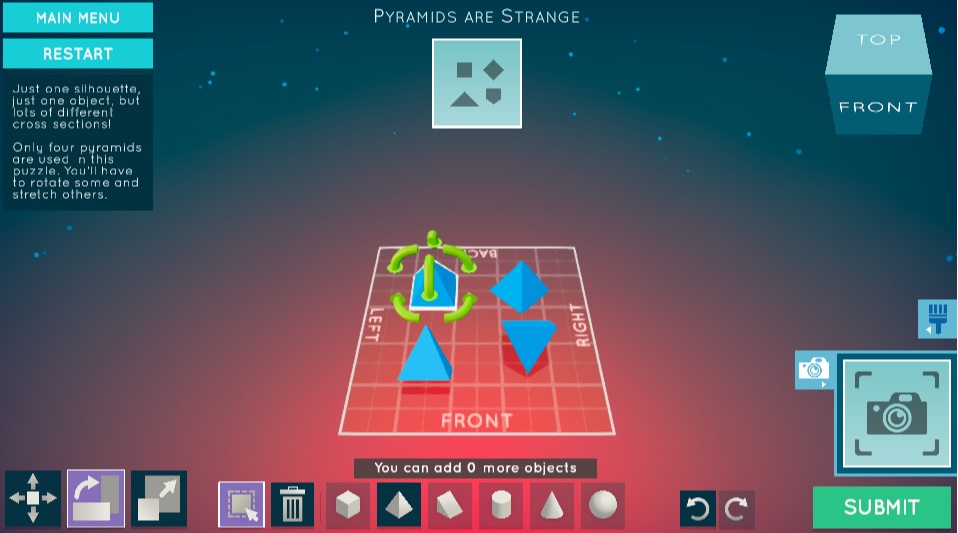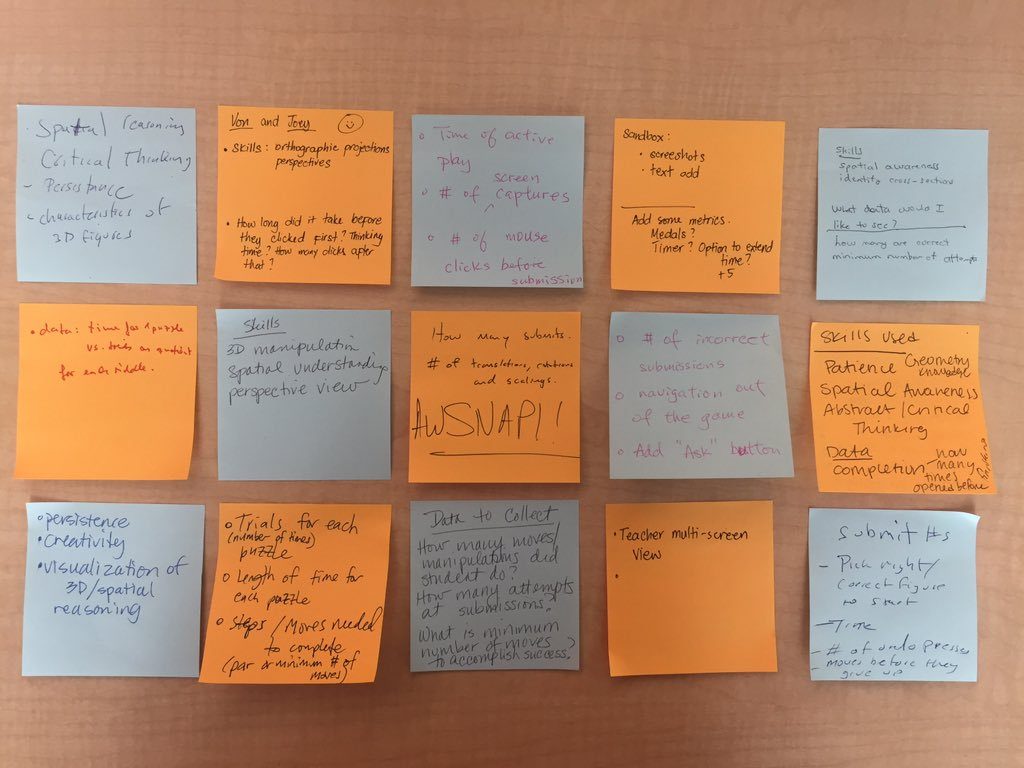
Shout out to Somerville math students who playtested Shadowspect this summer! A class of brave geometry students, getting ready for their first year of high school, got a chance to experiment with Shadowspect as a playful tool for reviewing geometric thinking. After a brief 5 minute introduction to the game, students were let loose to explore the levels and the open ended sandbox. They found out pretty quick that the game is more challenging than they’d anticipated. Getting the objects to scale is tricky when you’ve got an infinite number of angles to consider. But what was most valuable, students said afterwards, was getting a chance to really examine how basic geometric objects look from different perspectives. “We don’t get a chance to really look at this stuff” one student pointed out, “It’s hard to imagine what [the teacher] means when he says this is this” referring to the fact that a three dimensional object can appear as a two dimensional object, for example, the base of a pyramid can be a square. Seeing this so tangibly in Shadowspect was, for some, a revelation. Minds were blown!

A week prior to our playtest in Somerville, we brought Shadowspect to our SEPT teachers, who got a chance to playtest the game during one of their summer PD sessions. Teachers sped through the levels, several piling up at the last (most difficult) level finessing spheres into the shape of a bear (or turtle?). Teachers emphasized that this was a great spatial thinking tool, but others quickly added that the game had other important merits. It entices students to really spend time on a problem, one teacher pointed out. Other teachers agreed, adding that they would also use Shadowspect to teach, “Critical Thinking!”, “Persistence”, and “Creativity!” Other teachers noticed that Shadowspect can also function in their classrooms as a 3D modeling tool when used in the sandbox mode. A high school chemistry teacher, for example, pointed out that her students could use the spheres and the color coding tool to build 3D models of the chemicals they studied in class. A geometry teacher pointed out that he could use the sandbox tool to generate his own shadows and 3D objects using screenshots, thus offering new puzzles for his students that align well with the content of the lesson for the day.
The Shadowspect game is part of a larger research project developing and validating new types of game-based assessments to be used in math classrooms. These suggestions and others have ignited ideas at the Playful Journey Lab regarding lesson plans for Shadowspect as a learning game in its own right. Lessons and materials are currently in the works, and we hope that even before it is completed as an assessment tool, these resources will help teachers introduce Shadowspect to their students and engage them as persistent, creative, critical thinkers. Stay tuned!

